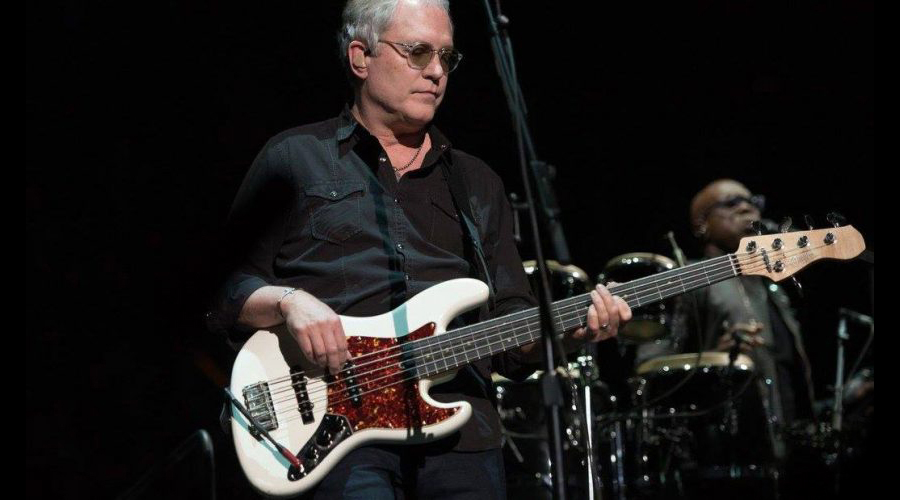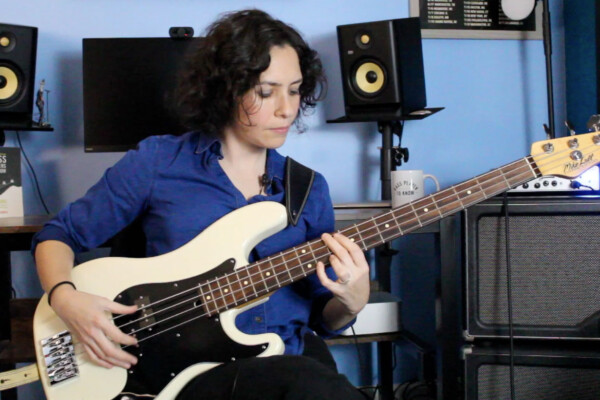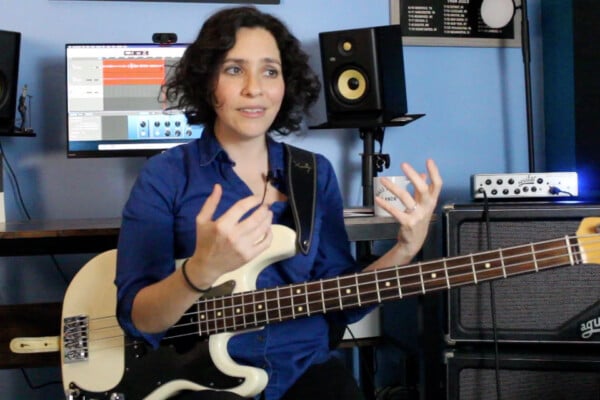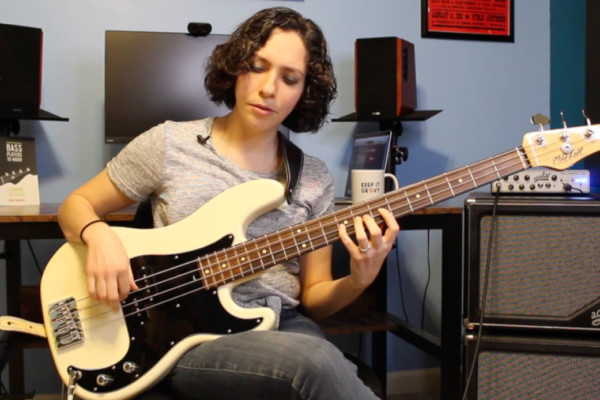The Lightbulb Moment: One Song To Learn

By this time in my musical life, I’ve learned a few songs… Heck, I’ve learned a few thousand songs. And they’re all different; some are simple and repetitive, others are complex and chock full of creative, beautiful moments. So this got me thinking… is there one song that contains an exemplary amount of bass playing knowledge? If you wanted to learn how to play bass, or if you had to contribute to a time capsule that would teach future generations and aliens how to play bass, is there one song that would serve as a creative, informative, and downright groovy entity?
I believe that there is, and it’s not necessarily something you’d expect. In fact, it’s something that you’ve probably heard before and either disregarded or not cared to learn. It’s something so commonplace in the realm of commercial music that the song’s popularity has likely overshadowed its inherent musicality. That song, however, contains a handful of musical techniques, various ways to approach a bass part, a fantastic example of diatonic harmony, and, as if that weren’t enough—a key change. In other words, it’s four minutes of music that masterfully exhibits a lot of what you need to know if you’d like to be a bass player.
That song is Bon Jovi’s “Livin’ On A Prayer,” featuring Hugh McDonald on bass.
If you’re thinking something along the lines of “that’s crazy talk,” then here’s a breakdown of why this song is a bottom-of-the-ninth, bases loaded, three balls and two strikes, out of the park, game-winning home run.
The Minor Pentatonic Groove (The Intro and Verse)
There’s nothing better than kicking off a song with luscious synths and an accompanying bass riff. McDonald anchors the verse with a punchy, minor pentatonic groove, otherwise known as an ostinato. He takes advantage of the open E string while keeping his hand on the sweet spot of the neck, the 5th-7th fret. As the chord progression changes, the bass pattern remains the same. The result is a greater sense of tension that echoes the feeling of humanity and desperation embodied by the lyrics.
Pedal The Root (The Pre-Chorus)
If there’s one technique that all bass players should aspire to master, it is pedaling the root note. During the pre-chorus, McDonald breaks away from the initial groove and follows the chord progression with a driving pedal.
Supporting The Melody (Mimicking The Vocal Phrase)
While it may be easy to gloss over, McDonald plays a uniquely perfect bass ornamentation in the pre-chorus. He accentuates the vocal melody by following the line, “if we make it or not.” This provides emphasis to the lyric, serves as a signature moment in the lower register, and breaks up the rhythm of the pedal with elongated notes.
The Epic Descending Slide (Signaling the Chorus)
Trying to set up the ultimate musical moment in a rock song? Play a descending slide into the first note of the chorus and rock on.
Movement, Melody, and Creativity
Learning how to play the chorus is just plain fun. It is in constant motion, integrating elements of walking bass as it cleverly navigates the chord progression. McDonald uses scale-based melodies that move in a descending-ascending manner, chromaticism, and a descending arpeggio. If it weren’t so perfectly composed, it would be quite the tongue twister. Kudos to you, Hugh McDonald, for creating one of the coolest bass lines ever.
Approaching Diatonic Harmony
Understanding this song on the “macro” level proves it to be a great lesson in diatonic harmony. In the key of G Major, the verses are based around the relative minor (E minor) and the common chord progression: vi – IV – V. You’ve heard this progression elsewhere, in classic songs such as All Along The Watchtower. At the end of the pre-chorus, the band plays hits on the V chord to set up the chorus with the classic move of dominant?tonic or tension?resolution. Despite the fact that the first chord of the chorus is E minor, the set up is still effective as the overall tonality is G Major.
Modulation
Oh yes, and to make things even better, there’s a key change before the last chorus. The song ascends by a step and a half (a minor third) from G Major to Bb Major. Talk about epic. Give your brain a work out by playing the chorus bass line in the new key!
Technique
While this song isn’t exceptionally challenging, you do need a fair amount of technique and fluidity on the instrument to play it well. You must be able to execute a “box pattern” groove, play brisk eighth notes, and have major-scale dexterity on the first five frets on the neck. In other words, it’s the perfect lesson in overall competency. If you find yourself challenged by any of the parts, then you’ll quickly identify your technical weaknesses and become aware of what you need to practice.
If that’s not enough to convince you to learn the song, then I’ll mention the fact that if you have any intention of being in a working band and making money as a bass player, then there’s a good chance that you’ll have to learn this song at some point in time. If that’s not your bag, then don’t worry about adding it to your regular repertoire. But, if there’s one song to learn just for the sake of understanding the instrument, discovering a creative way to navigate a chord progression, and learning a sweet groove, Bon Jovi and Hugh McDonald pack quite the punch in these four minutes of music.
Ryan Madora is a professional bass player, author, and educator living in Nashville, TN. In addition to touring and session work, she teaches private lessons and masterclasses to students of all levels. Visit her website to learn more!




Amazing column!!! Hope you write some more in that direction (with special, condensed bass wisdom tunes to learn). Thanks a lot!
Bravo! Good stuff.
I believe it was Bon Jovis original bass player Alec John Such on this track, rather than Hugh McDonald who started out as a touring member after Such left and officially joined the band years later. An epic bass line regardless!
HUGH played on every single Bon Jovi song that you ever heard.
Even the OLD LIVE stuff. Hugh Overdubbed ..
Played on Runaway too It was on a Local station WAPP record prior to the band fully being formed.
Hugh was the studio guy. Alec was Jon’s friend and live player until that chapter came to an end. The logical thing was to call Hugh in. He’s been with them since.
Don’t ask me how I know.
Zero degrees of separation maybe? ha
Kirk
i feel that another song where the bass part fits the song’s melody and changes perfectly, and drives the song forward musically, challenges technique, and is really a lot of fun to play is van morrison’s “jackie wilson said (i’m in heaven when i see you smile).”
Wow! Fantastic article and breakdown. I love this song and have been playing with the bass parts some. I now have a new appreciation for an already favorite song of mine.